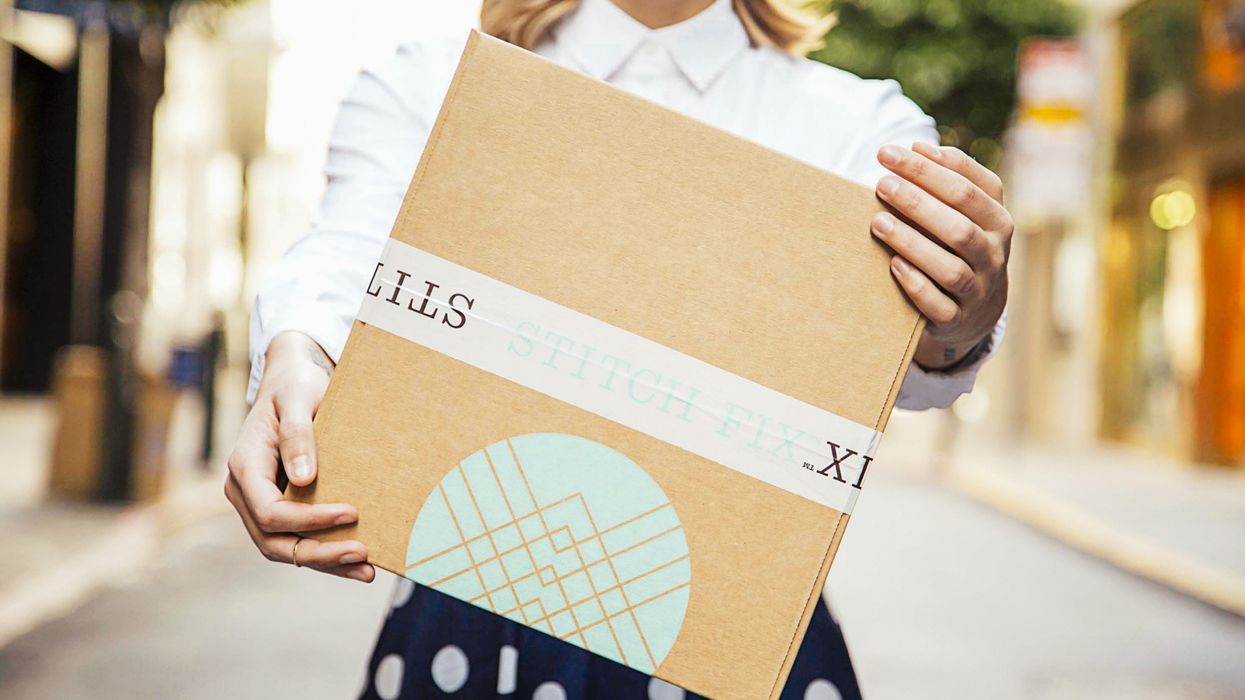First comes holiday shopping, then come the returns.
These end-of-year shopping seasons have long been defined in the retail calendar. After all, it's to be expected that people will want to exchange or bring back items that they received from someone else. Yet, like so much else in retail, ecommerce has made preferred customer options even easier and sped up the pace of these cycles. Free return policies and fast shipping have had the effect of changing up the long-held retail calendar to gel with the pace of the web.
This year, the shopping season was spread out over months as brands offered early deals. But many gifts will still be opened around the same time, so returns could come quickly, and all at once.
When it comes to return volumes, there are mixed signs of what to expect.
Ecommerce spending as a whole was up on the Black Friday-Cyber Monday weekend, and is generally expected to grow and outpace overall retail for the season as a whole.
But there are signs that returns are beginning to moderate. The National Retail Federation recently projected that the 2022 return rate for ecommerce will decline to 16.5% for the year. That's down markedly from 20.8% in 2021, but still well above the 8.1% return rate for overall retail in 2019.
What’s clearer is that brands and retailers must be prepared, operationally and even mentally. Leaders who just spent all of their energy making the most of holiday sales have to find a little bit left in the tank to serve customers who want to send an order back. While it may seem frustrating to deal with what could be a lost sale, winning a sale and loyalty later may depend on offering an experience that leaves everyone feeling good.
To learn more about what’s expected for the holiday season and the growing number of options people have for returns, The Current caught up with Tasha Reasor, SVP of marketing at Loop, a software company that helps Shopify brands like Allbirds, Chubbies and Brooklinen manage returns.
Check out the Q&A with Reasor:
The Current: With ecommerce sales showing growth, what should retailers expect this holiday season when it comes to returns?
Tasha Reasor: Given that Black Friday sales broke records this year, retailers are naturally expecting a fair amount of customer returns.
According to one of our recent surveys, 31% of shoppers will return at least a few gifts this holiday season. And Loop’s merchants are expecting to process about $200M in returns in December alone. That can mean significant losses to brands unprepared for this returns spike, as 57% of shoppers are willing to abandon a brand entirely when provided a poor post-purchase experience.
Retailers should also remember that most returns do not happen because a customer dislikes their brand, but rather because they dislike a particular product. A return is a chance for brands to re-engage with customers and repair a broken promise, whether that be a damaged item or one that didn’t look as expected or didn’t fit.
Therefore, it’s important that brands invest in their returns experience as this will not only save them time and money, but also drive revenue and foster brand loyalty. If a brand offers a flexible, personalized return experience, it will attract and retain happier customers. It’s that simple. This includes options like free returns, extended return windows, in-person drop-offs, and so much more.
There's already talk of "bracketing" and consumers returning items when they see a better deal. Are you seeing this, and what does it say about how habits are shifting?
TR: Bracketing has long been an issue when it comes to online shopping as consumers, by default, can’t physically try and feel the goods in an ecommerce environment.
This, in addition to the current economic climate, is largely why we’ve seen numerous major retailers, such as Zara and H&M, scale back on free returns and have started charging customers to restock merchandise.
However, curbing this behavior is a delicate balance between saving money and keeping customers happy, as our survey found that 96% of US consumers believe that a retailer's return policies directly reflect how much the brand cares about its shoppers. This is why offering alternative options such as product exchanges is such a vital practice. This can deter a customer from purchasing three different sizes and colors since they know they can simply exchange the product for something else if they are unsatisfied.
This is one method for ecommerce merchants to strike that all-important balance between managing costs and inventory and provide customers with a delightful experience in which they end up with the item they’re most happy with. But again, it’s a fine line that retailers must carefully manage, and there are numerous other options they could consider such as offering in-store credit or creating a tiered valuation system.
What are 1-2 strategies that can help to keep reverse logistics under control in the here and now of the holiday season, especially as many items are being shipped out for first-time sales?
TR: One strategy merchants can practice this holiday season to keep their reverse logistics under control and save a sale is to offer additional options beyond exchanges. Options like store credit or bonus credit all help keep costs down and drive more dollars for brands. Plus, brands can also offer more desired return options like at-home pickup or box-less drop-offs. All of which help increase revenue, lower costs, and improve customer loyalty.
Customer loyalty tiers are another way retailers can optimize and manage returns this holiday season and beyond. Some retailers have begun to create tiered systems of customer valuation, where specific return processes are offered to customers based on their past return and purchase history. This is an excellent way to reward your best customers, encouraging them to come back and shop again.
A final strategy that retailers can employ to keep their reverse logistics under control is to work with top 3PL partners, many of which are already integrated into Loop’s return platform. By utilizing expert partners in the logistics space, retailers can be certain that they’re getting the most out of their returns. But even more important, 3PL providers can greatly improve the sustainability of ecommerce returns. We believe that a great post-purchase customer experience and a healthy planet aren’t mutually exclusive, and partners like Loop empower merchants to adopt a more sustainable returns process.
Here’s a new one: Amazon is offering return dropoff at Staples locations. Why would Amazon want to partner with another retailer, and offer dropoff specifically for returns?
TR: Data shows nearly 62% of shoppers have stated that they are more likely to shop online if they can return their purchase in a physical store. Given that Amazon doesn’t have any physical locations, this is a very smart partnership. We’ve personally experienced success with drop-off returns, which is why we partnered with Happy Returns by PayPal in May. This allowed our merchants to offer box-free, label-free return drop-off at more than 5,000 locations across the U.S.
Not only will this move help Amazon decrease costs related to returns, but it also provides greater flexibility for consumers. Our data show that many consumers greatly value flexibility and would rather eat the cost of unwanted products than engage with a confusing or inconvenient returns process. Additionally, 42% of shoppers prefer to drop-off return items at a shipping partner like UPS or FedEx. Nearly a quarter (24%) opt for at-home pick-up, and a significant chunk (18%) prefer to return products directly to a retailer’s storefront.
Furthermore, more than half of consumers (56%) care about the environmental impact of returns "somewhat" or "a lot", and over 35% of consumers have opted out of returning a product due to the potential environmental impact. In-person options can greatly decrease the environmental impact of a return, and by alleviating this concern for consumers, retailers naturally improve their post-purchase experience. Nobody wants to be stuck with a product they have no intention of using or wearing; it’s vital that brands offer greener options to consumers.
In the end, retailers must provide flexible return options like home pick-up, return bar locations, directional online return transparency, and flexible return policies like free in-person returns, and extended return windows. This results in retailers gaining consumer confidence while simultaneously turning their costly returns into a profit generator for their business. And what we’re seeing from Amazon clearly validates these ongoing trends.












